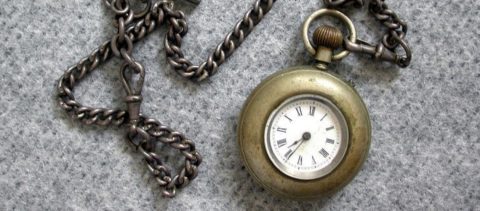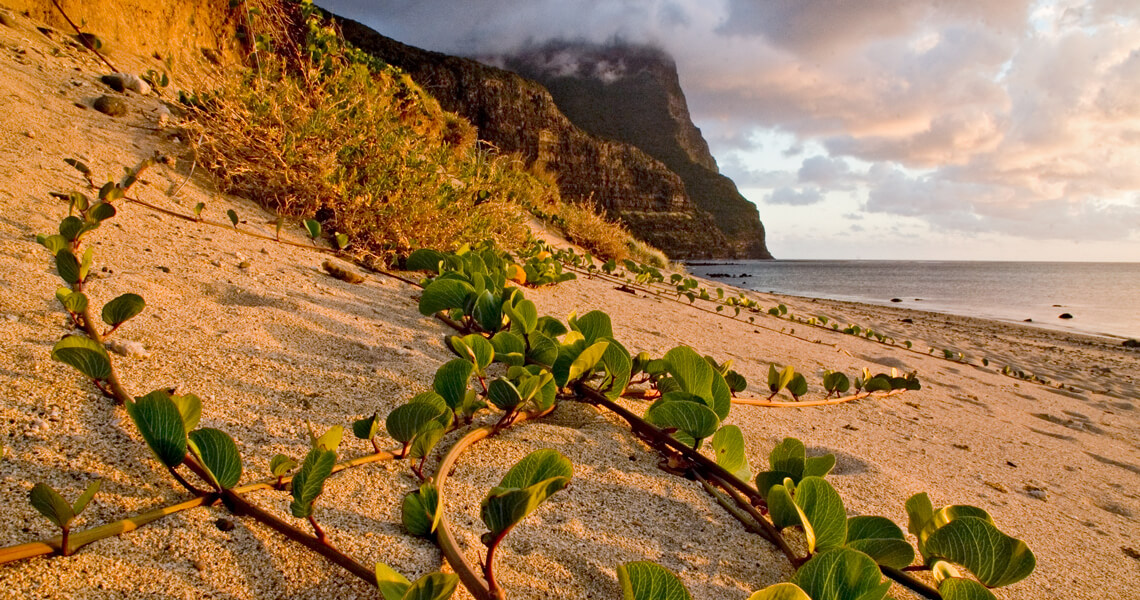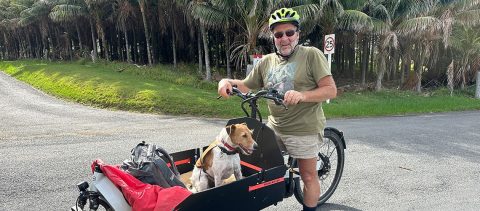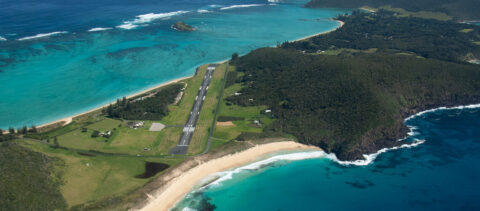
Update on eHive cataloguing project
The LHI Historical Society is continuing the project to log all artefacts held at the Museum onto the web based collections catalogue called eHive.

Small islands like Lord Howe Island are wonderful living laboratories that enable scientists to research and understand the processes of nature. Their smaller physical size and limited numbers of species make them much easier to comprehend than larger continents. Islands are usually relatively young and the origins of their species can be traced to neighbouring areas. Although the species that evolve may be quite distinct from their ancestors in distant lands, well informed guesses can be made about the processes which have led them to develop into their unique island forms.
One of the most intriguing processes in nature is the colonisation of Islands by plants and animals. How do these tiny, remote specks in the ocean become populated by myriads of plants and animals? For centuries, it has been a source of wonder to explorers and scientists to discover how remote islands, thousands of kilometres from the nearest land, become populated by rich assemblies of living organisms.
Three methods have been identified as the principal means by which plants are dispersed over the oceans – wind, water and transport by birds.
Many seeds are tiny and can be blown hundreds of kilometres in wind currents; or larger seeds may have a parachute of silky hairs attached, enabling them to float on air currents over long distances. Some insects can similarly be blown in wind currents, or some spiders weave a parachute of silk for air transport.
Many oceanic island plants have arrived as seeds that float; they must be buoyant and have a tough seed coat to survive in sea water.
Birds can carry seeds in their stomach or on their feathers; and even carry eggs of snails or crustaceans on their feet.
Certain groups of plants and animals are specially adapted for long distance dispersal, and many islands in the Pacific share similar species or genera. For example the Mountain rose Metrsosideros nervulosa of Lord Howe Island has relatives across the Pacific to Hawaii. Metrosideros seeds are tiny and blow long distances in wind currents; plus they survive cold temperatures encountered as they are carried aloft by winds.
Many families of plants produce spores or seeds that are so small or light that they can be swept aloft by wind currents. For example, algae, mosses, ferns and fungi, produce millions of tiny spores, almost like dust, that can float long distances if carried aloft by air currents under the right conditions. These spores may eventually return to earth in raindrops – perhaps even acting as condensation nuclei for rain. The volcanoes that form islands like Lord Howe Island often thrust high enough to deflect the prevailing winds higher, where cooler temperatures cause cloud to form and precipitation to occur.
Consequently, the algae, mosses, ferns and fungi were probably the first groups of plants to colonise the Island arriving as denizens of the air.
Like the mosses and ferns, some of Lord Howe’s flowering plants also produce tiny seeds which may have dispersed in a similar way – for example Mountain rose Metrosideros nervulosa and M. sclerocarpa, the Pumpkin Tree Negria rhabdothamnoides and the Tea tree Leptospermum polygalifolium.
Orchids, too, produce numerous tiny light seeds, and the orchid species on Lord Howe Island may all have arrived as seeds blown on the wind currents.

One of the most intriguing dispersal stories on Lord Howe Island is that of the Wedding lily Dietes robinsoniana, a member of the Iris family growing in widely dispersed clumps along the ridges and foreshores at the south end of the Island.
There are just four other species in the genus Dietes in the world, and all are native to southern Africa, which last had a land connection to Australia and Antarctica more than 80 million years ago.
As Lord Howe Island itself only emerged above the ocean surface about seven million years ago, Dietes robinsoniana must have arrived here since that time - possibly from mainland Australia, where it is now extinct.
Small seeds have very limited food reserves, so many perish compared with the few that survive. However, other plants produce larger seeds with more food stored, which are still able to disperse on the wind by clever adaptations.
For example, some species have a parachute of silky hairs attached, enabling their larger seeds to float on air currents over long distances.
Typical plants in this category occur in the daisy family, including on Lord Howe Island, Olearia elliptica, Pumpkin bush O. mooneyi, Mountain daisy O. ballii and Bullybush Cassinia tenuifolia. Similar seeds from other families are Parsonsia howeana, Clematis glycinoides, Marsdenia rostrata and Tylophora biglandulosa.
Many island plants produce buoyant seeds perfectly adapted for ocean transport, capable of floating hundreds or even thousands of kilometres from shore to shore. However, if they are to survive the rigours of the sea, they must also have an impervious seed coat that resists penetration by salt water, which would easily destroy the living part of the seed. Such plants usually grow along the seashore, or sometimes along riverbanks, where their seeds fall into water and are swept out to sea during powerful floods.
Evidence of these adaptations can still be observed by walking the beaches on Lord Howe Island. Many of the Island’s foreshore plants have seeds with these characteristics: for example, Goats-foot convolvulus Ipomoea pes-caprae, and Beach peas Vigna marina and Canavalia rosea. Further inland, but not too far from the shore, Nicker nut Caesalpinia bonduc, Burny bean Mucuna gigantea, Berrywood Ochrosia elliptica, and Beach lily Crinum pedunculatum are plants also having seeds capable of wide dispersal by ocean currents.
Searching the high tide line at Lord Howe Island, the beachcomber continues to find many seeds washed ashore. Whilst a few may eventually establish themselves, the majority will not survive because conditions are not favourable for their germination and growth. Some of those commonly found on the beaches, but not growing on the Island, include the Box fruit Barringtonia asiatica, Matchbox bean Entada phaseoloides, Candle-nut Aleurites moluccana, Alexandrian laurel Calophyllum inophyllum and Parinari glaberrimum.
Birds are amongst the most important agents for dispersal of plants. Many plants, and particularly those of the rainforest, produce colourful, fleshy fruits irresistibly attractive to birds because of their flavour and nutrition. However, whilst the fruits are digested in the bird’s gut, the tough seeds survive and are ejected some time later in their droppings.
Many of the Lord Howe Island plants produce colourful fruits with hard seeds, potentially attractive to birds – Greybark Drypetes affinis, Blackbutt Cryptocarya triplinervis, Banyan Ficus columnaris, Jasmin Jasminum simplicifolium, Kava Macropiper hooglandii, Black grape Psychotria carronis, Kangaroo apple Solanum aviciulare, six Coprosma species, Elaeocarpus costatus, and Corokia carpodetoides.
The ancestors of most of these species almost certainly hitch hiked to Lord Howe Island as seeds inside birds.
Just as certain groups of plants are well represented on islands, so it is for animals. Only those hardy enough to cross the ocean are found on remote islands. Mammals do not make ocean crossings well, probably because of their requirement for regular supplies of fresh water and food – consequently they are largely absent from remote islands. Amphibians have a permeable skin and are adversely affected by salt water so they also are not good ocean travellers. Lord Howe Island has no native frogs.
Lizards have an impermeable skin, can survive harsh conditions with little fresh water, and are often capable of floating on logs, or even rafts of pumice, over long distances. Lord Howe Island has a native gecko and a native skink.
Birds have the ability to fly across the ocean, and are consequently the most numerous vertebrate fauna of remote islands. When first discovered, Lord Howe Island had 16 species of native land birds and 12 species of seabirds.
A few mammals can also fly, and Lord Howe Island has one species of insect-eating bat – the Large forest bat Eptesicus pumilis.
The occurrence of organisms on oceanic islands is mediated by dispersal mechanisms. Many insects are strong flyers and have been routinely collected when aerial samples are taken. Others have rafted to islands by being attached to floating vegetation. Some invertebrates have been ferried on the feet of seabirds. And, of course, the biology of islands is littered with the invasion of alien species brought by colonising humans.
Although many species of insects on Lord Howe Island are flightless, it is likely that their ancestors were flighted. Of the major insects groups, there are 515 beetle species found on Lord Howe, and many wasp species. True bugs exhibit a high degree of flightlessness, with many of the 100 odd species having lost their ability to fly. Theory would suggest that a species arrives as flighted, then there is little competition and resources are plentiful, resulting in the evolution of new endemic species, which have often lost the ability to fly. The seed bugs are a good example of this, with many flightless species having evolved on Lord Howe Island.
Spiders are well known travellers on the air currents – some are so small that their bodies can be borne along by the wind, others spin small parachute like webs that carry them aloft, the latter referred to as ‘ballooning’. On Lord Howe Island there are 183 species of spiders.
Another mode of dispersal for invertebrates, usually attributed to migratory wading birds, occurs when small eggs (e.g. of snails or earthworms) adhere to mud on the birds’ feet. Thus, these tiny packages of life are airlifted from one place to another. Many of the ancestors of snails found on Lord Howe Island may have arrived this way; and the same theory has been advanced to account for the presence of a small freshwater crab Halicarcinus lacustris and a small freshwater shrimp Paryta howensis, both found in the Island streams.
A Guide to World Heritage Lord Howe Island, Ian Hutton, 2008.

The LHI Historical Society is continuing the project to log all artefacts held at the Museum onto the web based collections catalogue called eHive.

April 22nd is Earth Day 2025. We invite all e-bike owners on the island to meet at Signal Point for a group photo.

In the summer on Lord Howe Island we see several birds visiting from the northern hemisphere.

In early September, there were celebrations on the island to mark the 50th anniversary of the construction of the Lord Howe Island airstrip.